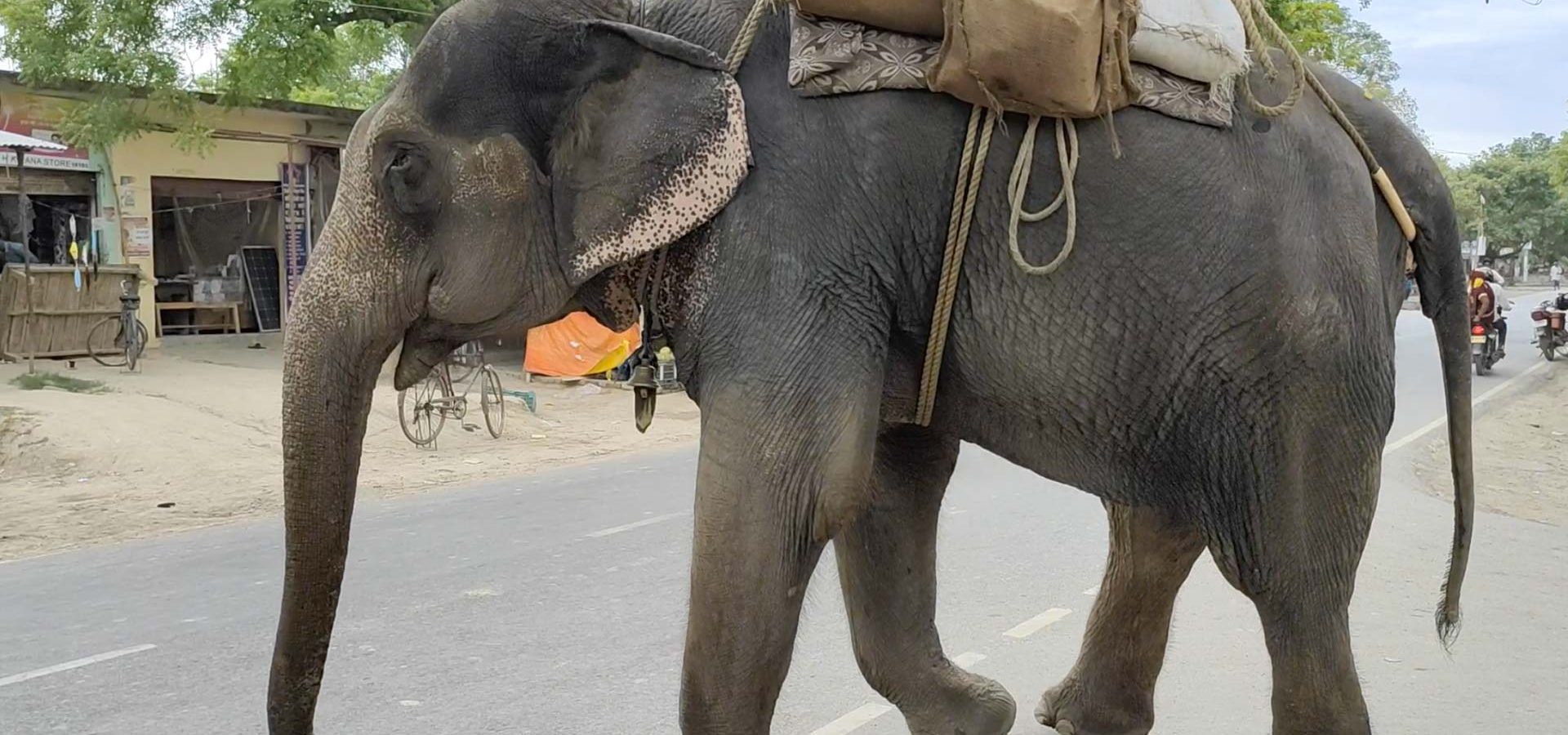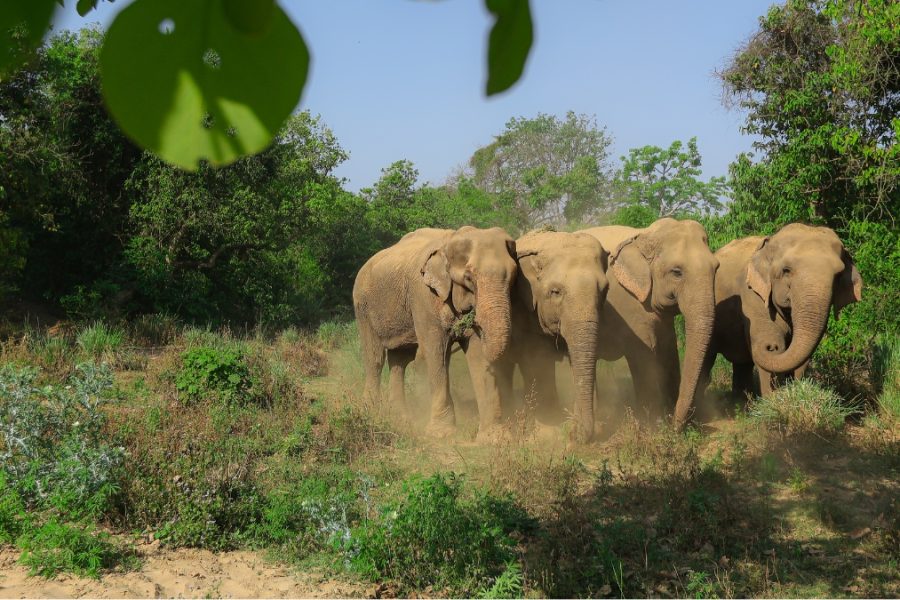You might be wondering where the question mark is in that query. But for us at Wildlife SOS, it is not a question but a reality which we have been dealing with for a long time, and still do. So we will try to answer what a begging elephant is as best as we can. These elephants are emaciated and malnourished, and made to walk on the streets of India for long hours for the purpose of begging alms. Some of these elephants are even blind (such as Arya, one of our rescued elephants) who have to forcefully walk from one village to another, and perform tricks such as lifting their trunks or giving blessings, which would fetch money.
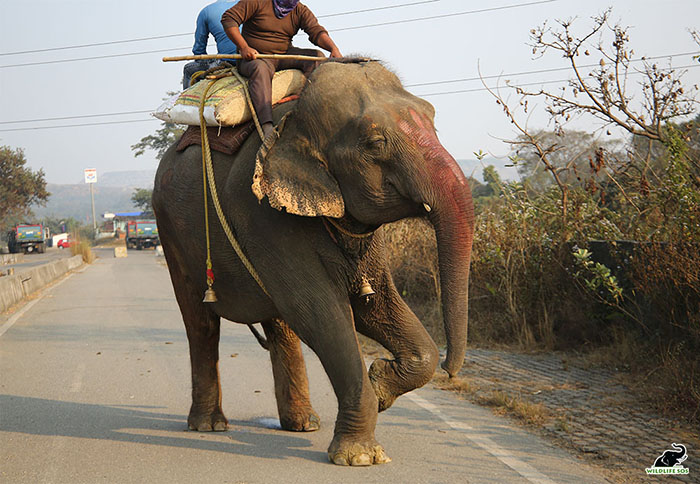
Elephants have been walking the Earth way before the emergence of human beings and in terms of ecological role, elephants are termed as mega-gardeners of forests. So they are in no way meant for begging or for any other form of human exploitation. It is the evolution of human society, and the eventual emergence of culture which tied elephants very intricately with our regular lives. These practices were rooted historically in ancient kingdoms and societies dating back to as early as 1000 BC in the later Vedic period, where elephants were tamed and domesticated by rulers and kings for purposes such as travel or war. Gradually, for the sake of livelihoods, domesticating animals became a norm which included even the wild ones. The brutal ‘Dancing Bear’ practice where Sloth bears were poached from the wild, held captive and forced to perform, is a testimony to this fact.
Using captive elephants for begging purposes to earn a livelihood also became a commonplace practice in various parts of India. Wildlife SOS has been working tirelessly in the country to rescue and rehabilitate these animals, and most of them turn out to be begging elephants. Not just in India, in Thailand too begging elephants are a common sight in the country’s major towns and cities including Bangkok, although the practice is illegal. These elephants are paraded around and used by the owners as begging tools.
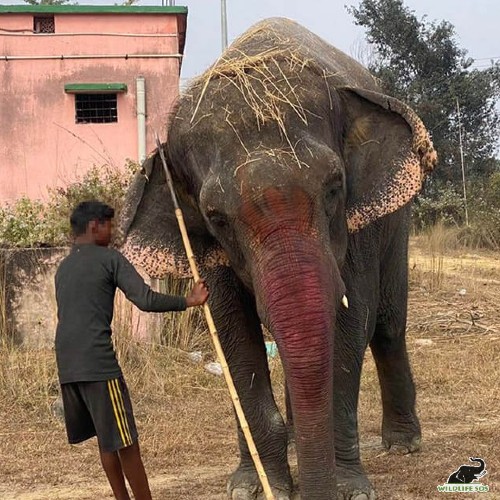
The scenario is somewhat similar in India. But the real question is how they end up under the ownership of citizens. Most of these elephants are poached from the wild when they are babies, after which they are sold into captivity. The real brutality starts when the calves are beaten and tortured physically for months, until they are so terrified of humans that they would do anything to avoid the abuse. This barbaric and gruesome act is called ‘phajaan’ or ‘breaking of the spirit’.
They are restrained in a confined space with their legs chained, where they are forced to stand in their own urine and dung. The calves are abused for months with electric prods, whips or bullhooks – a metal tool to stab their skins and tug their ears. They are deprived of sleep and starved for extended periods of time until their resolve is completely fractured. Once their spirits are broken, all that awaits these elephants is a life of hopelessness and despair, walking endlessly for the purpose of begging.
Wildlife SOS has a lot of rescued elephants under its care which were previously used for begging alms on streets. A mundane routine of forcefully walking on blazing hot and concrete roads which are completely unnatural for an elephant’s feet was the only constant thing in their lives. Elephants such as Phoolkali, Chanchal, Emma, Bhola, Karma, Kalpana, Holly, Jasmine, Zara, Arya and even our very recent rescues Pari, Ginger and Lakshmi were all begging elephants who are now living a much safer life at the Wildlife SOS rescue centres.
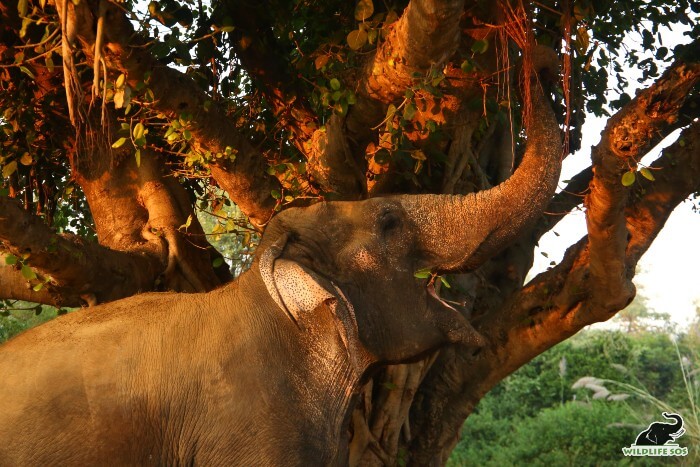
Jasmine, one of Delhi’s last begging elephants, was 40 years old when we learnt of her plight. She was forced to walk in Delhi’s scorching heat and unbearably hot roads which damaged her feet terribly, and tortured beyond imagination by the perpetual blaring of horns. But in September 2019, Jasmine was retired from this brutal life and rehabilitated at the Wildlife SOS Elephant Rehabilitation Centre in Haryana. Jasmine’s long-awaited rescue finally closed the curtain on the Delhi’s long-drawn association with captive elephants.
Similarly, Holly lived an exhausting life for nearly 60 years wherein she would be painted with bright colours and made to walk on roads littered with sharp pebbles and stones. When we brought her to the Elephant Hospital, her initial medical assessments had shown malnutrition, infected foot pad abscesses, cracked and overgrown toenails, and arthritic injuries to her limbs. Moreover, her mental health also suffered from painful and abusive memories. But long-term treatment and care by our veterinarians gradually helped Holly in her healing journey. From a timid and battered elephant, today Holly has transformed into one who loves long naps near a pool and spending time with her companion Kalpana.
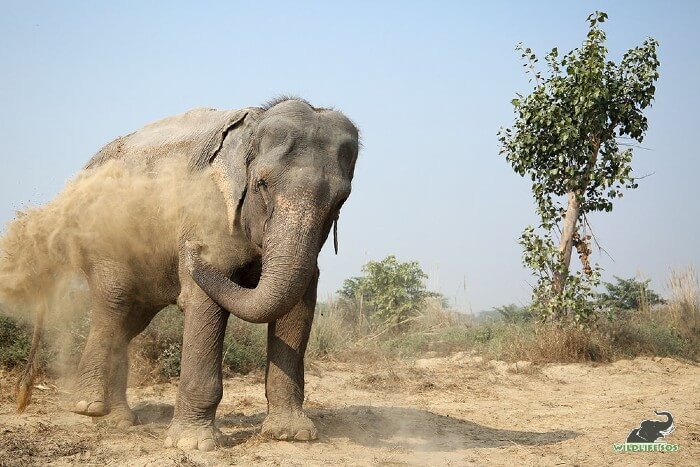
All the elephants that we mentioned have their own horrible past and painful stories to narrate; Ginger is a 60-year old blind elephant, whereas Lakshmi is termed as ‘India’s skinniest elephant’. And a harsh reality of these stories is the severely bruised physical health which the elephants have to suffer, left untreated or neglected for years. Some of the physical conditions include chronic abscesses and wounds, degenerative joint conditions, arthritic limbs, ankylosis, cracked and torn foot pads, protruding spines due to malnutrition, sunken temples, blindness and stereotypic behaviour.
That is why our team of vets and caregivers is extremely cautious when dealing with each and every one of these elephants while mending their physical and mental scars. To provide them the best quality medical care, Wildlife SOS also built India’s first hospital meant for the treatment of injured, sick or senile elephants and a dedicated staff works round-the-clock to reassure our rescued elephants that they are in a safe place.
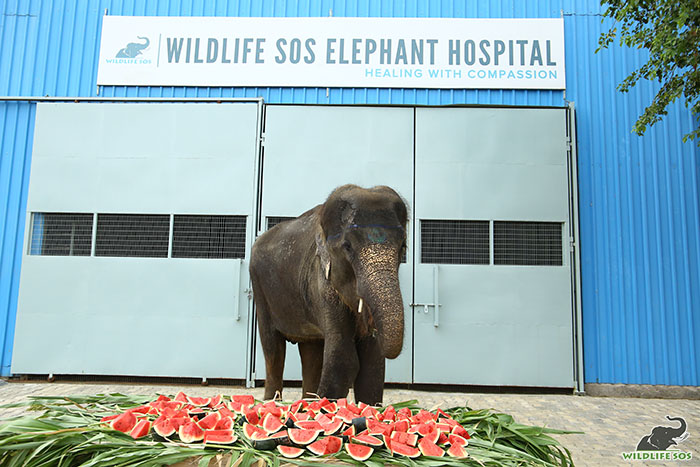
So the next time someone asks the question “What is a begging elephant”, the answer should be: something that should not exist.

